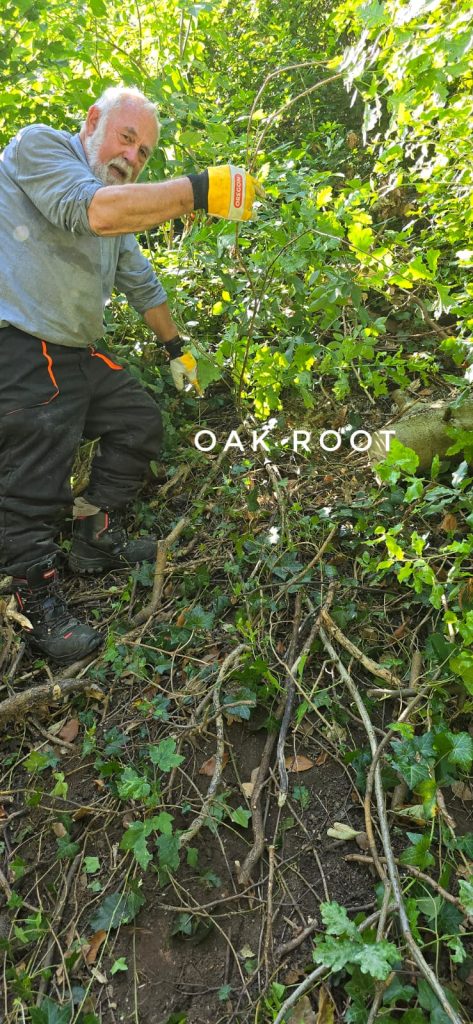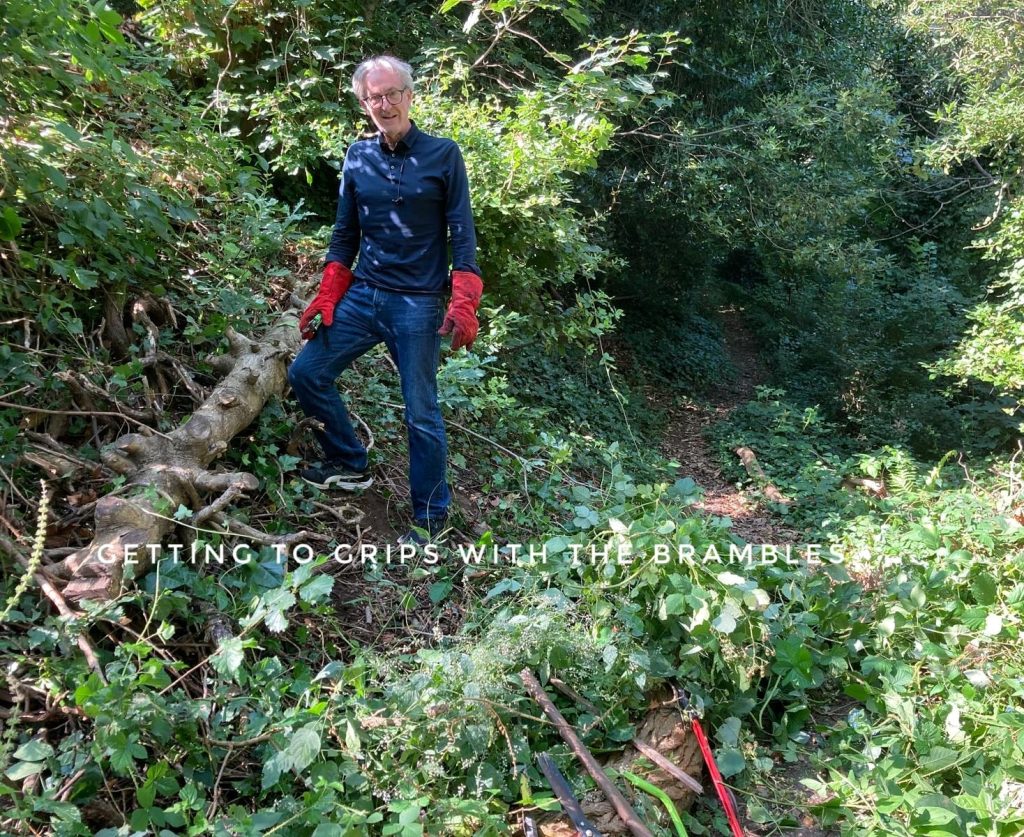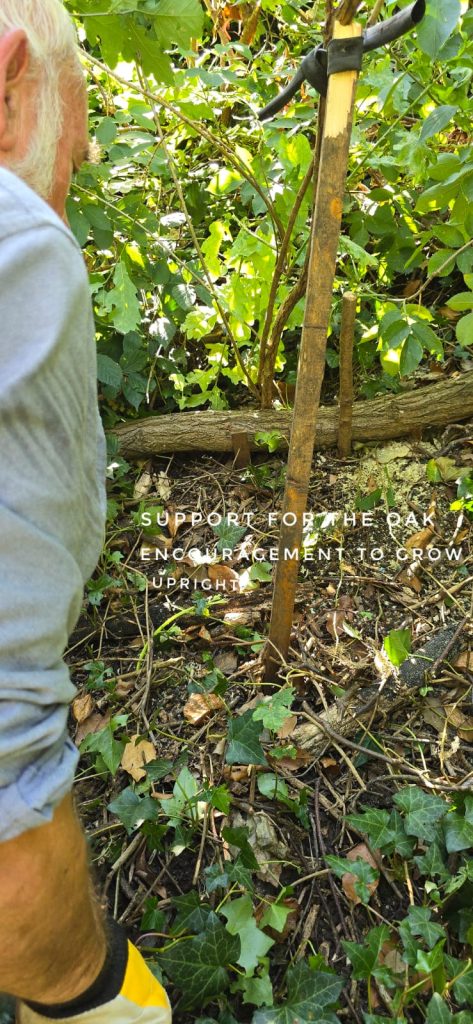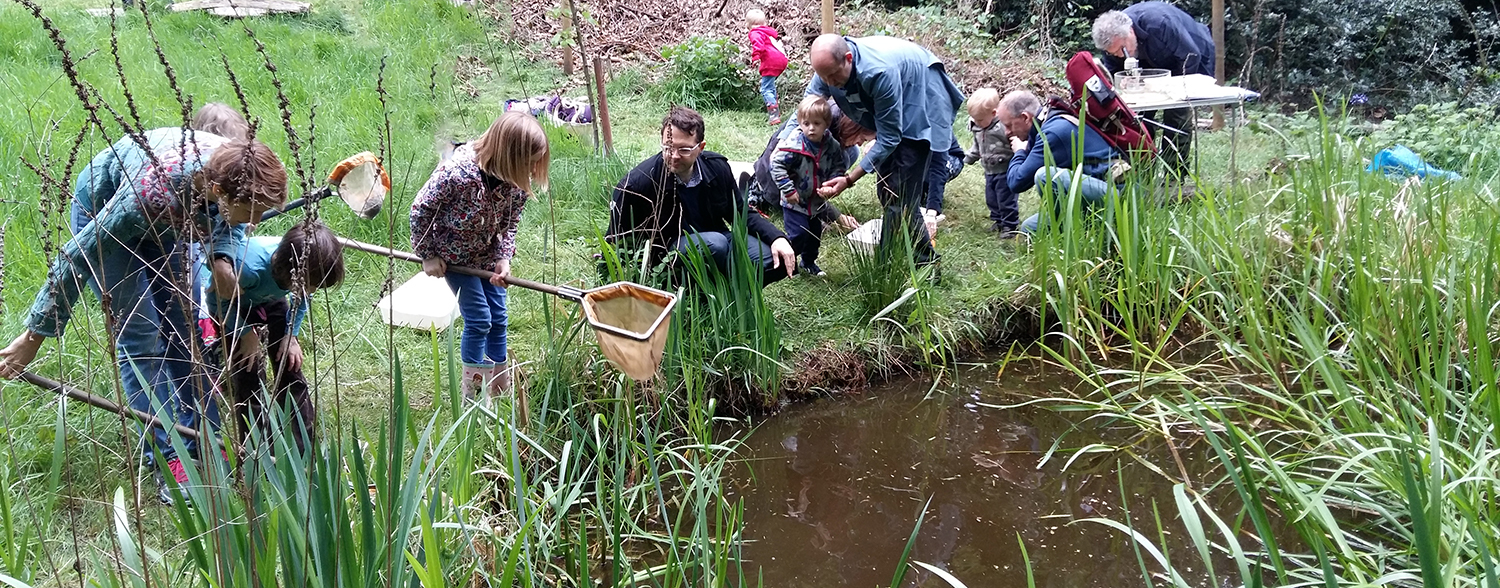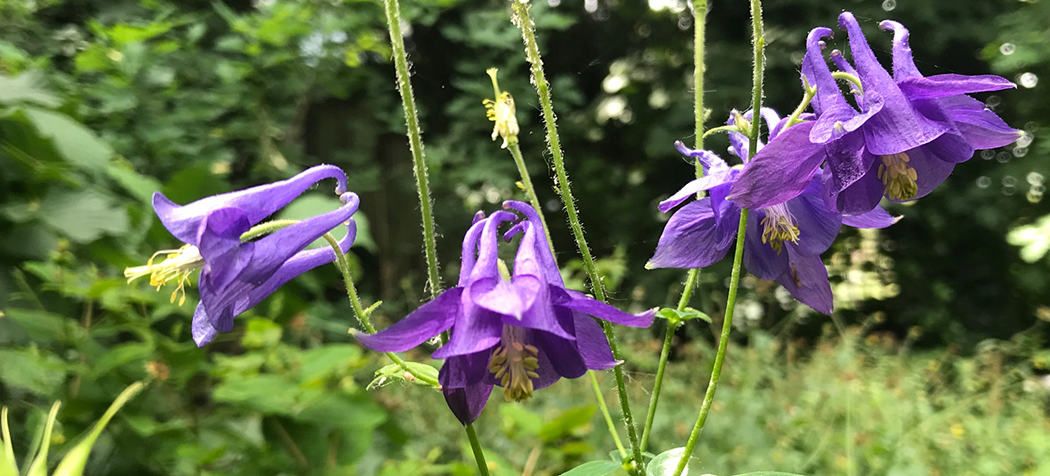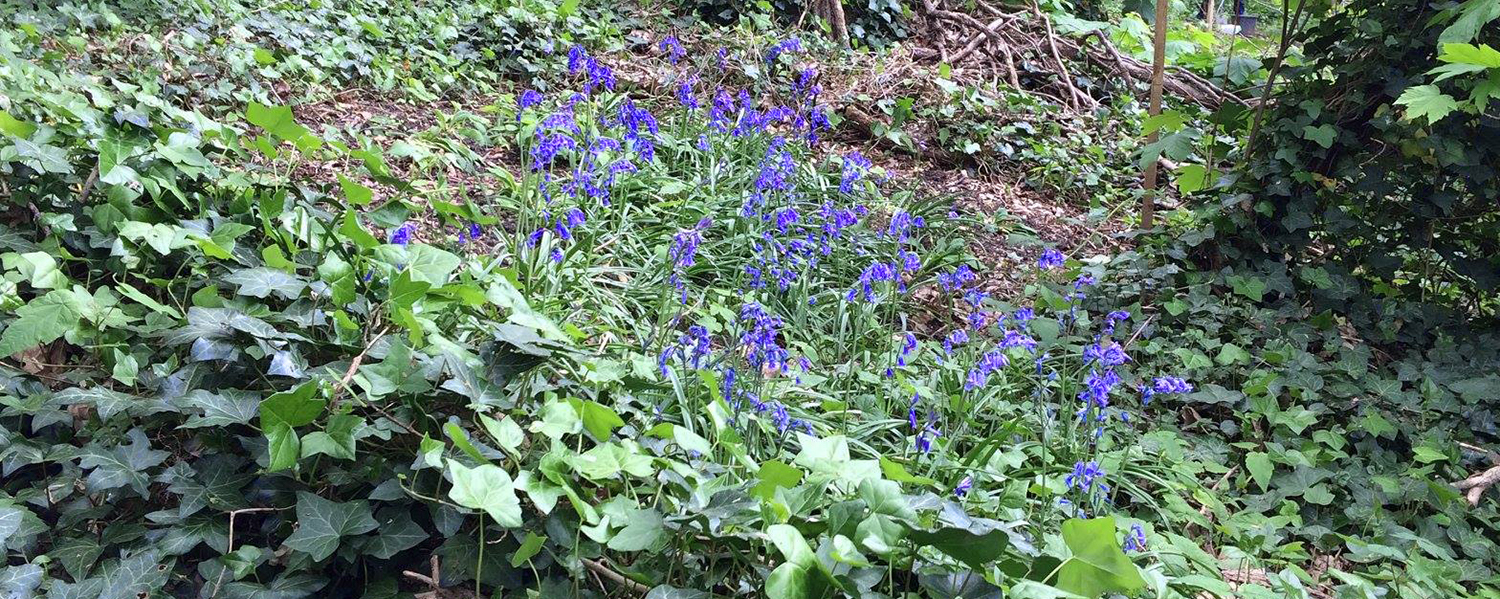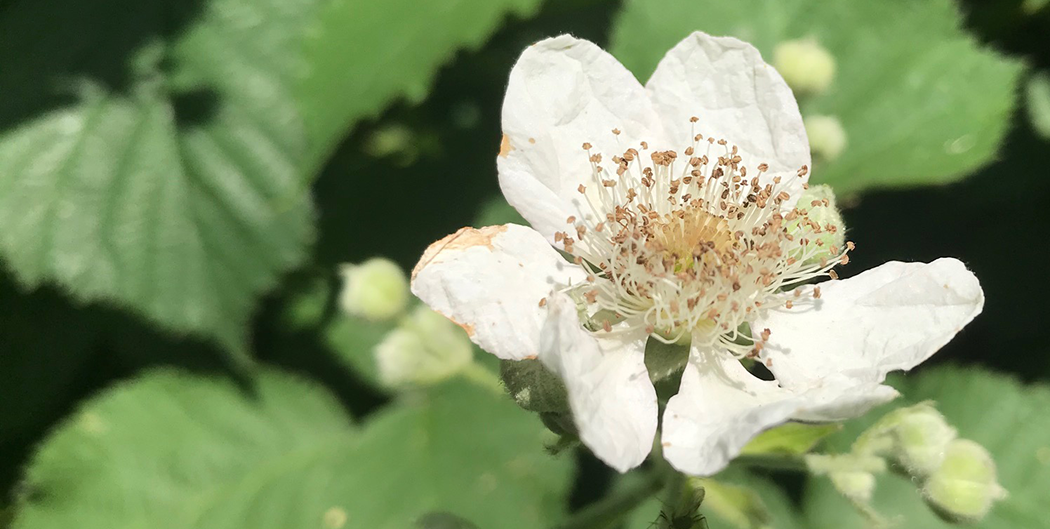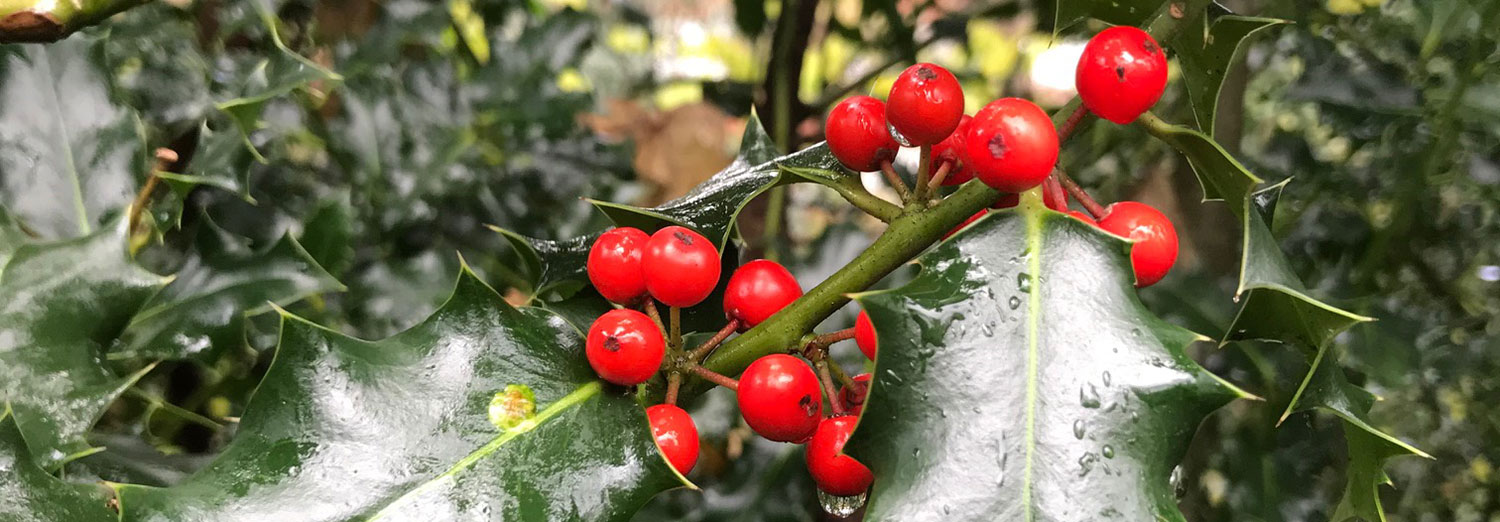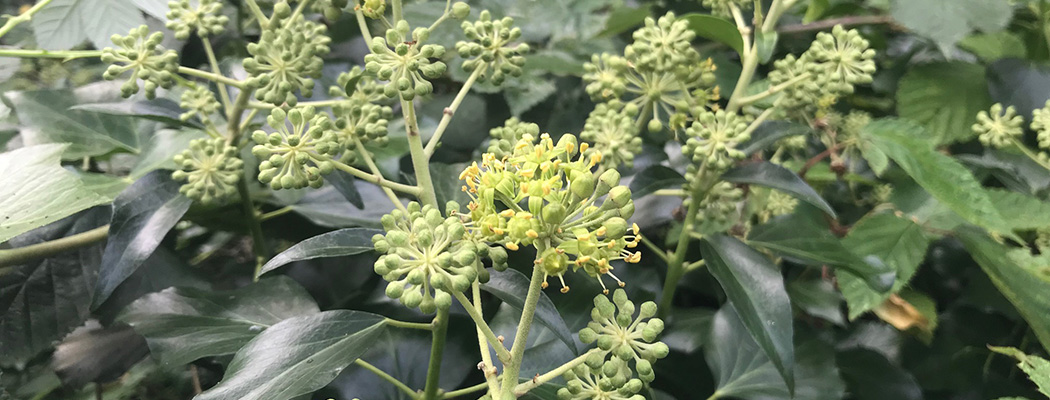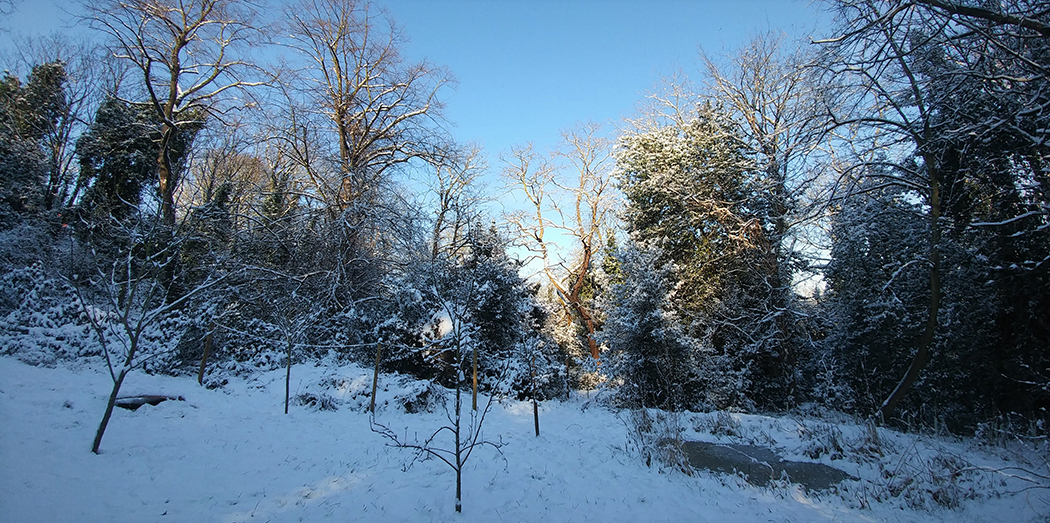At the end of July, Jeremy Rosie and Andrew Slade started the delicate process of “rescuing” a self-seeded oak sapling that is located next to the path from the main entrance. It’s around 7 feet tall, so it’s been growing for a while, but unfortunately had fallen due to other trees being felled and also being covered in bramble. The photos and video show the 2 taking action to remove a fallen tree, bramble removal and finally the upright tree in it’s new position being supported by a stake.
